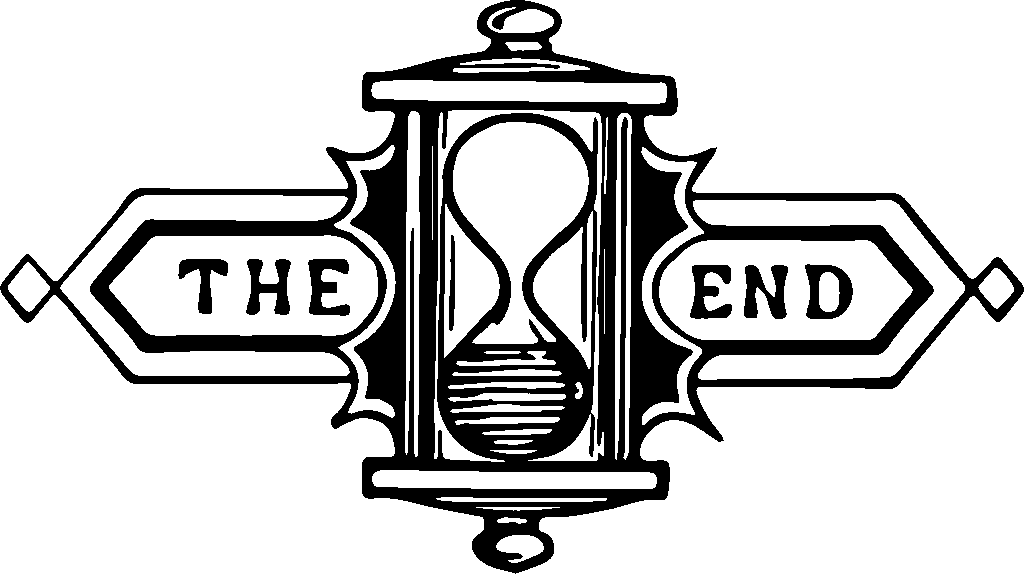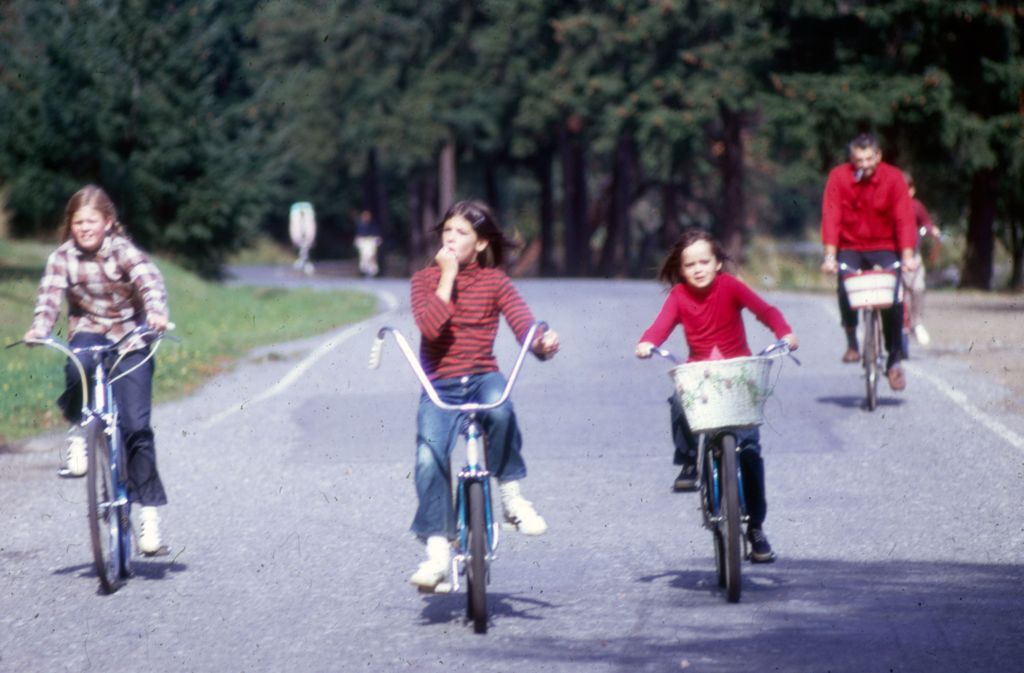In the annals of Hollywood, where careers are often intertwined by fleeting projects and superficial encounters, the enduring, albeit complex, relationship between Robert Redford and Natalie Wood stands as a fascinating narrative. Both became indelible figures in cinematic history, their luminous presence gracing screens across decades. Yet, their shared journey began not under the dazzling lights of a film set, but in the prosaic hallways of a California high school, an initial encounter that was anything but harmonious, foreshadowing a friendship that would weave through the fabric of their respective ascensions to stardom.
This article embarks on an in-depth exploration of this extraordinary bond, delving into the pivotal moments that shaped their connection. From an unlikely and rather ill-tempered first meeting to Natalie Wood’s instrumental advocacy in launching Robert Redford’s nascent film career, their story is rich with the kind of nuanced human interaction that often lies beneath the glossy surface of celebrity. We will trace the intricate threads of their professional collaborations and personal camaraderie, revealing a friendship that, despite its eventual fading, left an indelible mark on both their lives and on Hollywood itself.
Prepare to uncover the layers of a relationship that, much like the intricate tapestries of the films they graced, was woven from moments of friction, profound support, genuine affection, and the inevitable currents of changing fortunes that define a life lived in the public eye. Theirs is a tale of mutual respect and an enduring connection that transcended the ephemeral nature of fame, offering a rare glimpse into the authentic humanity of two legendary stars.

1. **Their Unlikely First Encounter at Van Nuys High School**
The story of Robert Redford and Natalie Wood’s initial meeting reads like a scene from an adolescent drama, far removed from the glamour that would later define their lives. It was within the bustling confines of Van Nuys High School in California, a seemingly ordinary setting, that these two future titans of cinema first crossed paths. Redford, then a graduating senior and a recognized “senior class golden boy,” found himself on duty as a school assembly guard, positioned at one of the auditorium’s entrances.
Into this carefully controlled environment, a young Natalie Wood, late for registration, raced towards him, urgently pleading for entry. Redford’s response, as he later confessed to Suzanne Finstad in Wood’s biography, *Natasha*, was far from accommodating. He recalled the scene vividly: “There were about four or five doors going all the way around the oval-shaped auditorium, and each door had an alphabetical sequence over it — A through F, G through L.” He was simply being a barrier, perhaps relishing a minor sense of authority.
What followed was a moment of what Redford candidly described as “machismo bull****.” He demanded her name, despite not having “a clue who she was,” and insisted she couldn’t enter through his assigned door. Wood, whose surname begins with a ‘W’, was directed to the opposite side of the sprawling auditorium. Meanwhile, another student standing alongside Redford, recognizing the already-famous child star, was silently “freaking” at Redford’s oblivious demeanor.
Wood, understandably, was more than a little vexed by this stubborn refusal. She departed with a stinging retort, reportedly calling Redford an “SOB,” before making her way to the correct entrance. This unpromising, even contentious, first impression would lay a memorable foundation for a relationship that, despite such an inauspicious start, would later become one of profound mutual influence and enduring friendship in the unforgiving landscape of Hollywood.

2. **A Decade Later: The Broadway Reunion with Warren Beatty**
Ten years elapsed before Robert Redford and Natalie Wood’s paths would intersect again, a decade during which both had begun to carve out their distinct identities within the entertainment industry. The next significant encounter occurred in the sophisticated milieu of a Broadway theater, far removed from the adolescent skirmishes of high school. Redford was performing in the play *Sunday in New York*, diligently working to establish himself as a serious young actor on the rise.
One evening, after catching a performance of Redford’s compelling Broadway turn, Natalie Wood arrived backstage. She was accompanied by her *Splendor in the Grass* co-star and then-boyfriend, Warren Beatty, a prominent figure in his own right. This meeting marked a significant moment, bridging the gap between their youthful antagonism and the burgeoning respect they would develop for each other as adults navigating the competitive world of acting.
Intriguingly, when prompted about their earlier, rather frosty, high school interaction, Wood claimed no recollection of the rebuff. Whether this was a genuine lapse of memory, a diplomatic omission, or perhaps a testament to Redford’s then-unremarkable status in her world, it allowed their adult relationship to begin with a clean slate. This fresh start was crucial, setting the stage for a connection that would soon propel Redford into an entirely new trajectory within the film industry.
This reunion was more than a casual backstage chat; it was a subtle but profound turning point. For Redford, it was an encounter with a star of considerable magnitude, signaling his own growing relevance. For Wood, it reconnected her with a talent she had clearly begun to notice, laying the groundwork for a professional advocacy that would prove invaluable to Redford’s blossoming career.
3. **Natalie Wood: The Catalyst for Redford’s Cinematic Ascent (Inside Daisy Clover)**
The seemingly serendipitous reunion on Broadway proved to be a pivotal moment, as Natalie Wood would soon play a singularly instrumental role in launching Robert Redford’s movie career. Redford, despite his Broadway successes, was still on the cusp of cinematic stardom. It was Wood who recognized his untapped potential and possessed the influence to act as his advocate in the tightly controlled world of studio filmmaking.
The context reveals that Redford “had been on Wood’s radar for some time,” a testament to his burgeoning talent and presence. It was Wood who “convinced studio honchos to cast him” in a critical role, demonstrating her significant sway within Hollywood’s power structures. This was not a minor endorsement; it was a determined effort by an established star to champion a promising, yet less-known, contemporary.
The role in question was a challenging and intriguing one: that of a “closeted movie star” in the 1964 film *Inside Daisy Clover*. This part offered Redford a complex character to inhabit, showcasing his depth and versatility beyond mere good looks. It was a role that, according to the context, quite literally “launched his movie career,” providing the breakthrough he needed to transition from stage actor to burgeoning film star.
Wood’s advocacy at this crucial juncture cannot be overstated. She leveraged her standing to open a door that might otherwise have remained closed to Redford, fundamentally altering the course of his professional life. Her belief in his talent, perhaps glimpsed during his Broadway performance or even earlier, was the catalyst that transformed potential into tangible opportunity, setting him on a path towards becoming one of Hollywood’s most iconic leading men.

4. **Forging a Bond: The Nature of Their Friendship (Redford’s Perspective on Wood)**
The professional collaboration on *Inside Daisy Clover* quickly blossomed into a genuine and deep personal friendship, forging a connection that would endure for years. It was during the filming of this pivotal movie that Robert Redford and Natalie Wood truly “hit it off,” moving beyond their initial prickly encounter and subsequent professional reunion to form a bond rooted in mutual respect and understanding. This personal chemistry proved as compelling off-screen as their dynamic was on-screen.
Redford’s profound admiration for Wood was later articulated in a poignant reflection. He described her as, “underneath everything, was a very sweet, genuinely down-to-earth person who was slightly colored by the warped life of being a star at such an early age.” This quote offers a window into Redford’s perception of Wood’s authenticity, recognizing the inherent goodness beneath the veneer of early stardom. It speaks to an empathy for the unique pressures she faced, having grown up within the demanding glare of the public eye.
He further elaborated on the qualities that drew him to her, emphasizing her genuine character. “But she herself, as a human being, shone through that,” Redford asserted, highlighting the strength of her true self. He added, simply and powerfully, “She was a real person. And I responded to that.” This profound statement underscores the value Redford placed on sincerity and integrity, qualities he clearly found in abundance in Natalie Wood.
Their shared experiences, the unique pressures of Hollywood, and a deep appreciation for each other’s genuine nature solidified their friendship, which the context confirms lasted “for years.” This was not merely a professional alliance but a heartfelt connection between two individuals who understood the complexities of their lives and found solace and authenticity in each other’s company. Their bond became a quiet testament to enduring human connection amidst the often-transient world of celebrity.
5. **Reunion on Screen: *This Property Is Condemned***
The burgeoning friendship and successful collaboration established during *Inside Daisy Clover* naturally led to another shared cinematic endeavor, further solidifying their professional and personal rapport. Just two years later, in 1966, Robert Redford and Natalie Wood teamed up once again, gracing the screen together in *This Property Is Condemned*. This second pairing showcased their undeniable chemistry and the ease with which they worked, reinforcing their status as a compelling on-screen duo.
This film offered them another opportunity to collaborate, building upon the foundation laid by their previous project. Such repeat collaborations were not uncommon in Hollywood, but when fueled by genuine friendship, they often imbued the on-screen performances with an added layer of authenticity and depth. Their shared history, both personal and professional, undoubtedly contributed to the nuanced portrayals they delivered in this period piece.
The context highlights this reunion as a continuation of their professional journey together, a testament to their mutual respect and the industry’s recognition of their combined star power. It speaks volumes about the strength of their connection that they were sought after to work together again so soon. This period marked a vibrant chapter in both their careers, with Redford’s star rapidly ascending and Wood maintaining her position as a celebrated leading lady.
Their return to the screen in *This Property Is Condemned* further cemented their status as a memorable pairing, allowing audiences to witness the captivating dynamic that had grown between them. It was another significant milestone in a friendship that bridged the personal and professional, reflecting a time when their paths were deeply intertwined both on and off the set, nurturing a bond that seemed destined to endure.

6. **The Cameo and the Cooling: *The Candidate* and Their Drifting Apart**
While their earlier collaborations had been central to their intertwined careers and deepening friendship, their third shared film, the 1972 political drama *The Candidate*, marked a subtle but significant turning point. In this instance, Natalie Wood’s appearance was not a leading role designed to showcase their dual star power, but rather a cameo performance. She participated because her “old friend asked her to do a cameo,” indicating a shift in the nature of their professional engagements, perhaps reflecting the differing trajectories of their careers at the time.
This appearance, while still a collaborative effort driven by their bond, also signaled the beginning of a gradual professional and personal divergence. The immediacy and intensity of their earlier collaborations had waned, replaced by a more peripheral involvement. It represented one of their last direct professional links, a moment where their paths, while still connected, started to subtly pull apart.
Crucially, the context notes that “Wood and Redford lost touch shortly after that.” This poignant statement marks the beginning of the end of their period of close contact. The demands of their individual lives, burgeoning careers (for Redford) and perhaps a cooling of the intense connection they once shared, led to a natural drifting apart. It is a common, yet often melancholic, aspect of long-term friendships, especially within the transient world of Hollywood.
This phase illuminates the evolving nature of celebrity relationships, where even the most heartfelt bonds can be impacted by the relentless pace and changing demands of their profession. The cameo in *The Candidate* serves as a poignant bookmark, signaling a moment where their closely woven narrative began to unravel, leading to a period of diminished contact, even as the memory of their shared history and mutual impact lingered for years to come.
7. **The Final Attempt: *Ordinary People* and Wood’s Unfulfilled Hope**
While their earlier collaborations had been central to their intertwined careers and deepening friendship, their direct professional links became fewer and further between after the 1972 political drama *The Candidate*. However, their paths would briefly, and poignantly, converge one last time, driven by Redford’s burgeoning aspirations as a director. This final interaction occurred around 1980, when Redford was meticulously casting for his directorial debut, the intensely emotional family drama *Ordinary People*.
For Natalie Wood, whose career had by this juncture experienced a noticeable cooling, this project represented a coveted opportunity. She was particularly drawn to the demanding role of the “cold, distant mother,” a character that promised significant artistic challenge and a chance to reassert her dramatic prowess. Her interest signaled a desire for meaningful work, seeking to inhabit a character of profound psychological complexity that could reignite her cinematic presence.
Yet, Redford, embodying the director’s discerning eye, held a specific vision for the character. Despite their long-standing history and the deep bond of friendship that connected them, he ultimately concluded that she “didn’t think she was right for the role.” This decision, driven purely by artistic judgment, was a professional one, with the part eventually going to Mary Tyler Moore. It marked a quiet, yet definitive, end to their direct collaborative history, leaving Wood’s hope for a joint venture unfulfilled.
8. **A Tragic End and Redford’s Enduring Gratitude**
The poignant finality of their professional interactions was tragically underscored just a year after the casting of *Ordinary People*. On November 29, 1981, a shocking event unfolded as Natalie Wood “would drown off the coast of Catalina.” This devastating news resonated deeply throughout Hollywood and among those who had been touched by her luminous presence and vibrant spirit. It was a loss that profoundly impacted many, but perhaps none more so than Robert Redford.
Redford was, as the context reveals, “heartbroken” by her sudden and unexpected passing. His sorrow was multi-faceted, stemming from not just the immense personal affection he harbored for her—he had always “liked Wood immensely”—but also from a deep-seated professional obligation and an enduring sense of gratitude. Their friendship, born from an unlikely high school encounter and solidified through shared cinematic ventures, had left an indelible mark on his life.
He remained eternally “grateful to the actress for giving him his big break and launching a career that’s lasted till this very day.” Her early and crucial advocacy for his casting in *Inside Daisy Clover* had been the singular event that propelled him onto the big screen, fundamentally altering the trajectory of his professional life. Wood’s unwavering belief in his talent, at a time when he was still finding his footing, established her as an irreplaceable figure, a true friend whose impact he clearly cherished long after their paths had diverged and her life tragically ended.
Read more about: All About Late Actor Robert Redford’s 4 Kids and 7 Grandchildren: A People Magazine Look Into His Cherished Family Life

9. **Beyond Acting: Redford’s Artistic Soul and Reluctance for Stardom**
To truly grasp the singular nature of Robert Redford’s journey and his eventual ascent to iconic status, one must look beyond the conventional narrative of a Hollywood star. Redford harbored an artistic soul that initially pointed him towards a vastly different destiny. He was not one of the many “Americans born between 1890 and 1945 [who] wanted to be movie stars”; instead, he “was an aspiring painter who made a truce with his professional destiny” as an actor, suggesting a compromise rather than an initial ambition.
Born in Santa Monica in 1936, Redford’s formative years included a period in the San Fernando Valley, which he candidly described as “a great sea of nothing.” Here, he spent his youth engaged in “sports and getting into trouble. And cruising and getting into trouble,” hinting at a restless, rebellious spirit. The death of his mother when he was 18 was a significant early loss. Following a brief enrollment at the University of Colorado, his artistic inclinations led him across the Atlantic to Paris, where he “dreamt of post-Impressionists, not big screens,” illustrating his profound initial disconnect from cinematic ambitions.
Paris, however, proved to be “a bust,” leading him back to the United States and eventually to New York. There, he attended Pratt, married a young Mormon woman, and began a gradual, almost accidental, foray into acting through “walk-ons and television appearances.” This reluctant transition was a profound one for him. He recalled feeling, “I could do it. I hadn’t had much experience, but when I got into it, when I shifted from art to acting, something happened very naturally, and then I took it seriously and worked hard at it, and then I developed a curious confidence about it.”
This innate artistic temperament and initial reluctance profoundly shaped his unique persona. Actress Elizabeth Ashley poignantly observed, “Bob was a little finer—he was an artist, and we were showbiz trash,” highlighting his distinct sensibility and intellectual depth. Director Mike Nichols also recognized this unique quality, experiencing a “frisson” that made him exclaim, “Where the hell did he come from?” It was this artistic grounding and understated intensity that truly set Redford apart from his peers, foreshadowing the sophisticated actor he would become.
10. **The Making of an Icon: Redford’s Cinematic Ascent and Defining Roles**
Redford’s ascent in acting, while initially marked by an artistic reluctance, began to solidify with early television roles that showcased his brooding intensity. A notable early performance was in a “haunting 1962 episode of The Twilight Zone,” titled “Nothing in the Dark,” where a young Redford portrayed Mr. Death. This period of early struggle and resilience was pivotal, as he famously explored the “breaking point for some people and not for others” when confronted with profound hardship, a theme that would resonate throughout his career.
His breakthrough on Broadway arrived with Neil Simon’s *Barefoot in the Park*, a role that brought him significant attention and critical acclaim. Yet, his path to cinematic superstardom was not immediate or without its turns. He notably declined the role of Nick in *Who’s Afraid of Virginia Woolf?* and was famously rejected by Mike Nichols for the lead of Benjamin Braddock in *The Graduate*. Nichols, with characteristic candor, told him, “You can’t play a loser. Look at you. How many times have you struck out with a woman?” to which a “dumbfounded Redford responded, ‘What do you mean?'” This exchange perfectly encapsulates Redford’s inherent winner’s aura.
While the 1960s were a period of refining his craft and finding his footing, the 1970s witnessed his spectacular emergence as the era’s definitive movie star. His true breakout came with the 1969 film *Butch Cassidy and the Sundance Kid*, a legendary collaboration with Paul Newman. This “story of friendship” between two charming outlaws not only captured the public’s imagination but also became the “top-grossing film of 1969,” earning seven Oscar nominations and serving as his undisputed “gateway to stardom in the 1970s.”
This success was followed by an astonishing string of iconic and diverse roles that cemented his “cinematic magnetism.” In 1973, he reunited with Newman for *The Sting*, another acclaimed tale of outlaw friendship. He captivated audiences as a romantic leading man alongside Barbra Streisand in *The Way We Were*, embraced the wilderness as a mountain man in *Jeremiah Johnson*, explored political intrigue in *The Candidate*, revisited a seismic political cataclysm in *All the President’s Men*, and chilled audiences with his CIA role in *Three Days of the Condor*, notably among the only films shot inside the Twin Towers. His portrayal of Roy Hobbs in 1984’s *The Natural* further solidified his mythic presence, ensuring that “to watch Redford is a rendezvous with the best of twentieth-century American film.”

11. **The Sundance Legacy: Championing Independent Cinema and Environmentalism**
As Robert Redford’s illustrious acting career matured and he solidified his status as a Hollywood legend, his creative energies increasingly gravitated towards new frontiers: direction and, perhaps even more significantly, institution-building. Recognizing a vital need within the film industry, he channeled his profound understanding of storytelling and his passion for authentic voices into the creation of the Sundance Institute.
The Sundance Institute, through its world-renowned film festival, became a transformative force, unequivocally launching “a new age of independent movies.” It emerged as a crucial incubator, providing a platform and nurturing environment for burgeoning talent. This dedication fostered the careers of visionary directors such as Steven Soderbergh and Quentin Tarantino, whose 2019 film *Once Upon a Time in Hollywood* even contained a subtle yet clear “homage to those Redford–Newman films of friendship,” a testament to Redford’s lasting influence on cinematic storytelling.
Beyond his groundbreaking work in independent cinema, Redford was, and remains, a deeply committed “environmentalist.” His advocacy was rooted in a profound belief in “conserving natural beauty,” an impulse that transcended mere rhetoric to inform his artistic endeavors. This passion found powerful and poignant expression in his 1992 directed film, *A River Runs Through It*, based on Norman Maclean’s acclaimed 1976 novel. The film, narrated by Redford himself, was a breathtakingly beautiful exploration of brotherhood, memory, and the pristine wilderness of early twentieth-century Montana.
In that unforgettable film, the stoic father asks his son, Norman, about his deceased brother, Paul. Norman, voiced by Redford, replies, “Maybe all I know about Paul is that he was a fine fisherman.” The father’s profound response, “You know more than that. He was beautiful,” encapsulates not only the film’s enduring message but also, perhaps inadvertently, the multifaceted legacy of Robert Redford himself—a man whose contributions to art and nature were truly beautiful.

12. **The Last American Movie Star: Redford’s Enduring Persona and Cultural Impact**
Robert Redford embodied a distinctive “enduring American sensibility—a blend of cool and regal, charm and rebellion.” His cinematic presence was magnetic, a rare quality that effortlessly transcended demographic divides, drawing “young and old, men and women,” to experience his captivating performances. His carefully cultivated persona—that of the “masculine and charming, the dashing, enigmatic outlaw”—was nurtured from his Santa Monica origins and honed through a career that privileged substance over superficiality.
He stood apart from many of his Hollywood contemporaries by embracing the natural progression of age with unwavering authenticity. Redford famously articulated his philosophy, stating, “I never had a problem with my face on screen. I thought it is what it is, and I was turned off by actors and actresses that tried to keep themselves young.” This honest and refreshing perspective resonated deeply with audiences, reinforcing his image as a man comfortable in his own skin, allowing his “looks weathered with age and time.”
Indeed, as the insightful Gore Vidal observed, while “All Americans born between 1890 and 1945 wanted to be movie stars,” Redford presented a unique case. He was “an exception,” a man who eventually made a “truce with his professional destiny,” reconciling his artistic leanings with the demands of stardom. His extensive filmography offers a cherished “rendezvous with the best of twentieth-century American film,” a rich tapestry of performances that collectively define an era.
Ultimately, Redford achieved a singular status, becoming recognized as “the last all-American movie star.” His lasting impact is not merely confined to the silver screen or the countless accolades he accumulated, but extends to the cultural landscape he profoundly shaped. From his challenging youth and artistic pursuits to his unparalleled rise to stardom, and his dedicated championing of independent cinema and environmentalism, Robert Redford carved out a legacy of immense influence. He was, as the powerful final lines of *A River Runs Through It* suggest about the beloved brother, a figure who millions felt was truly “beautiful,” an enduring icon whose light will continue to shine brightly in the pantheon of cinema history.









